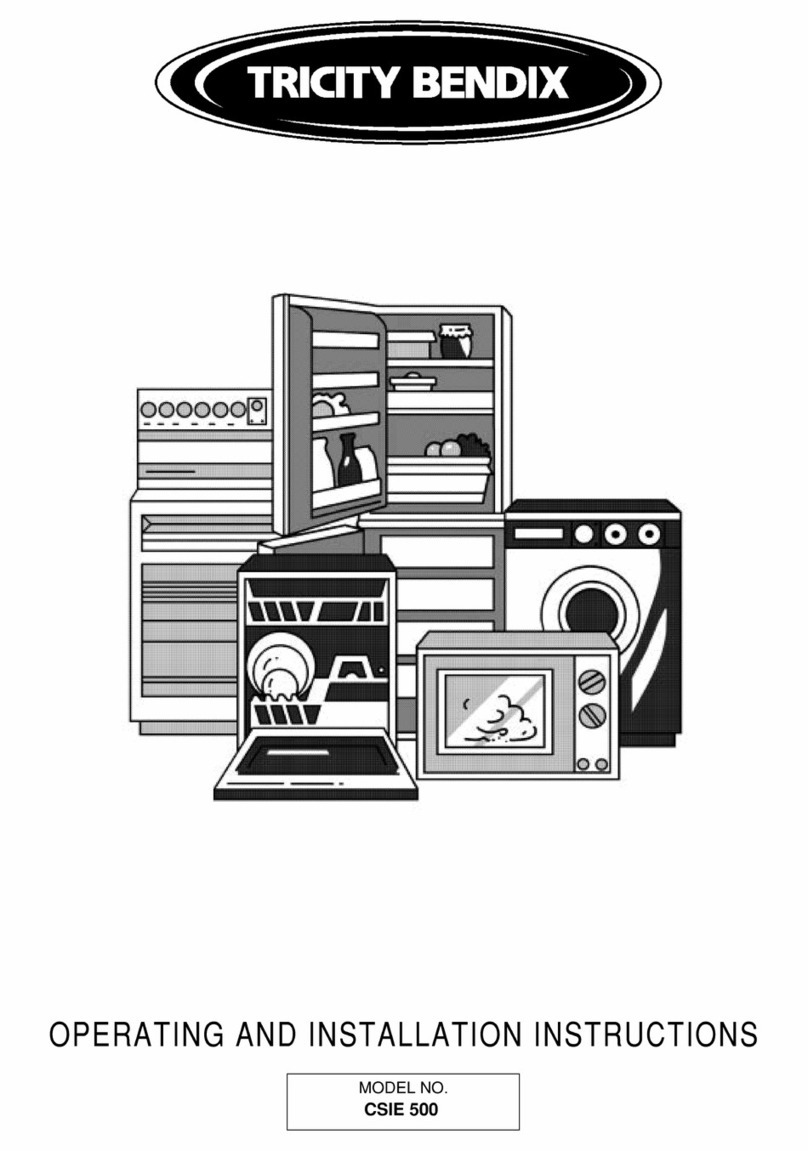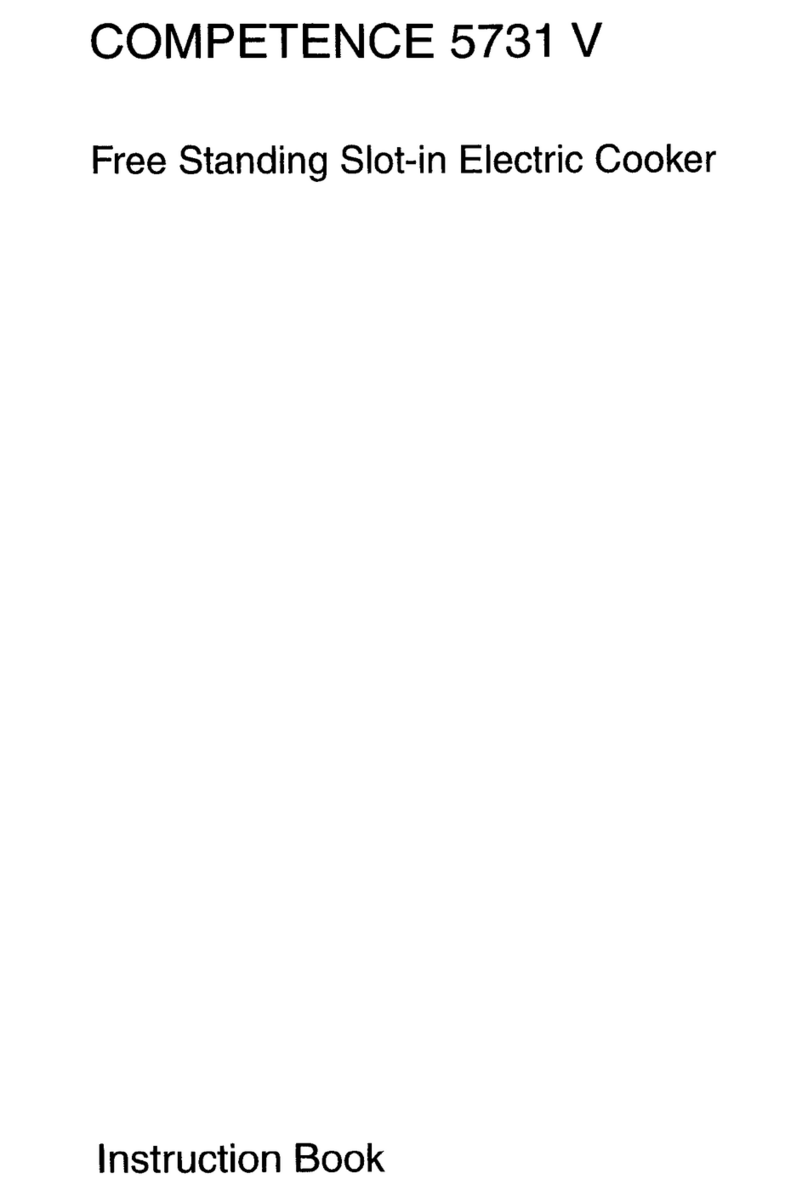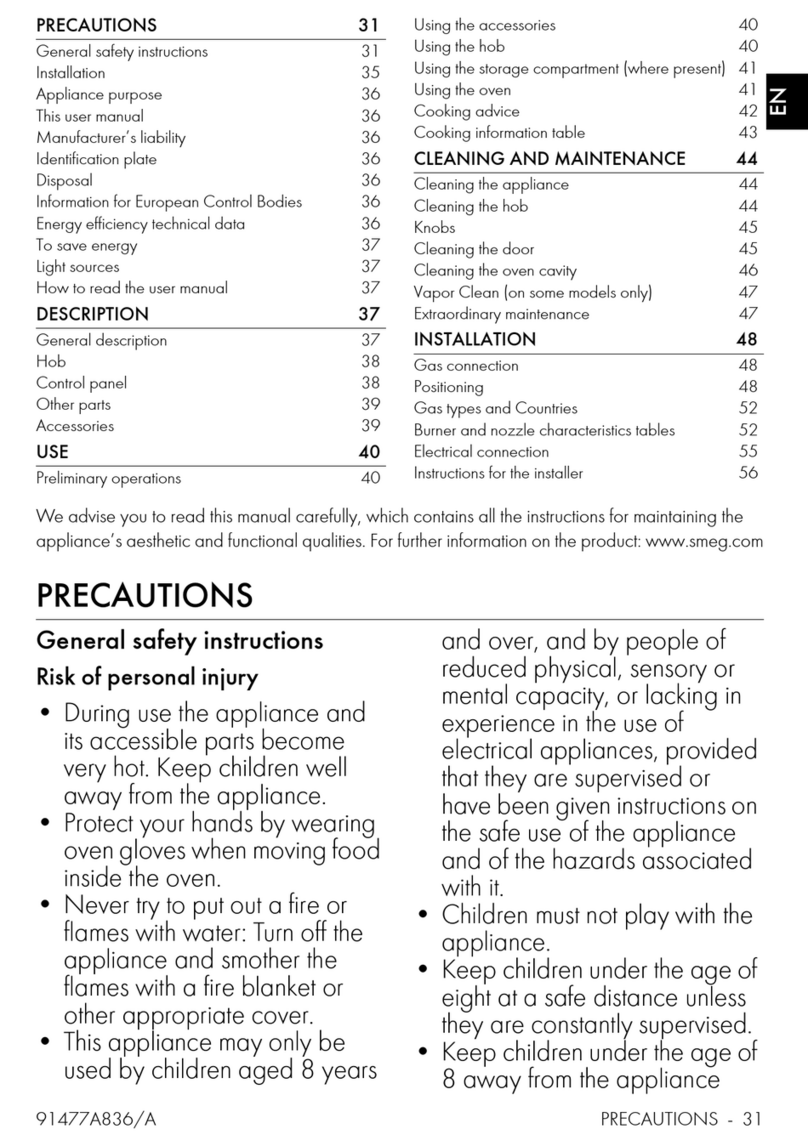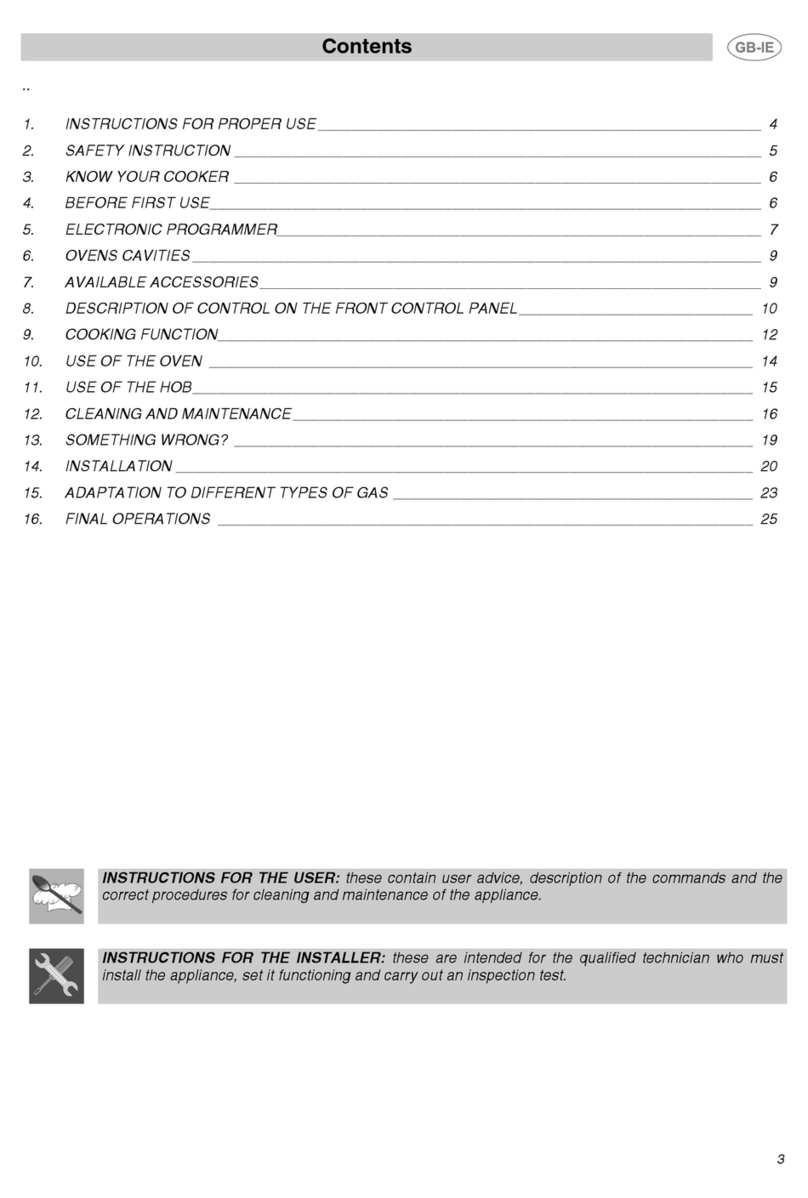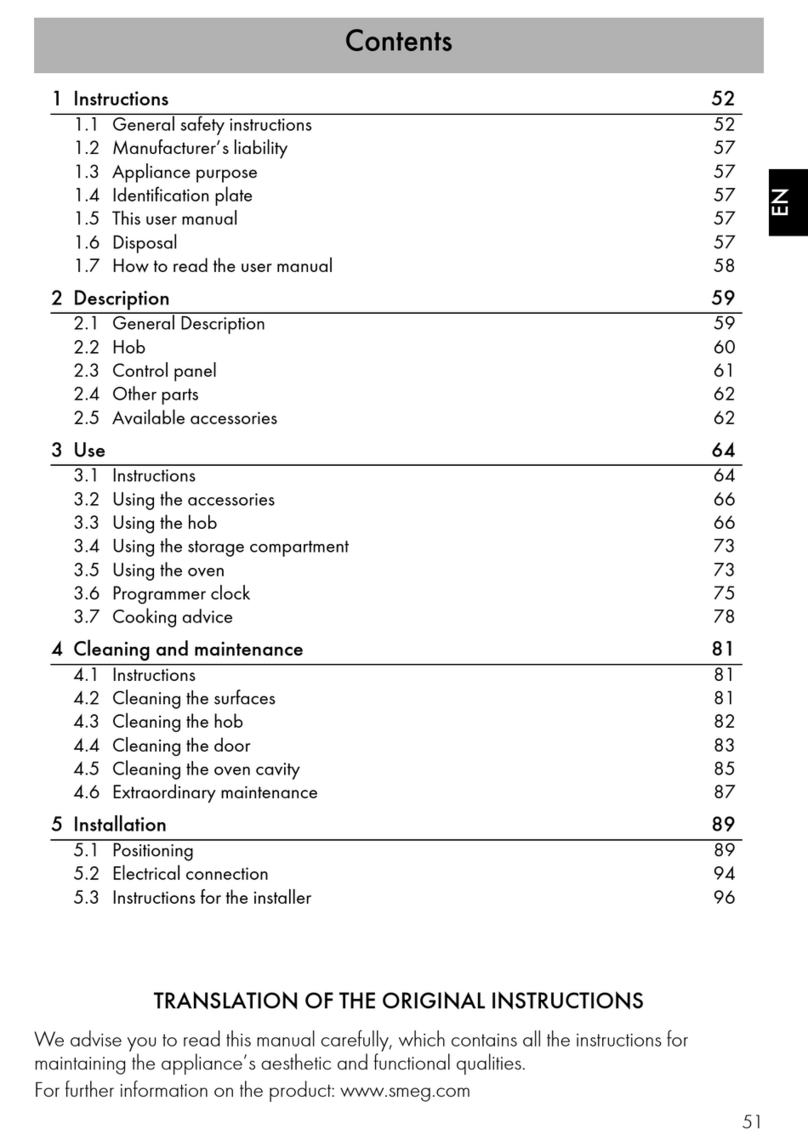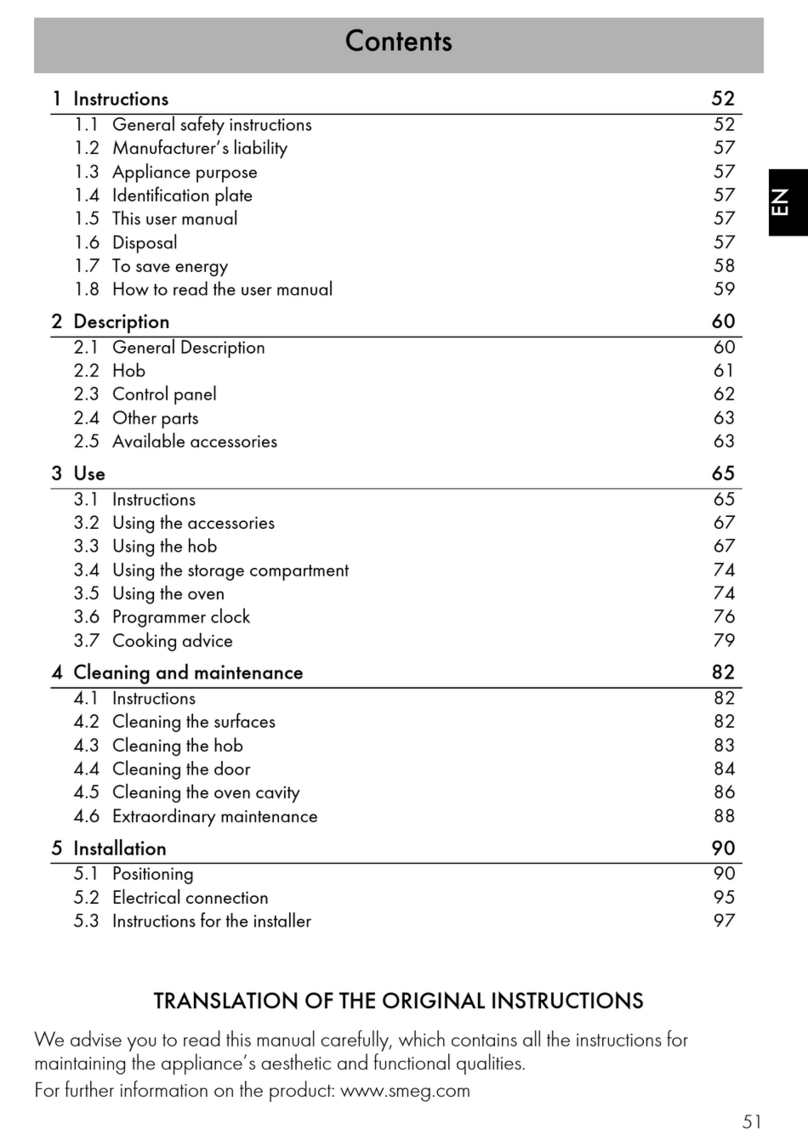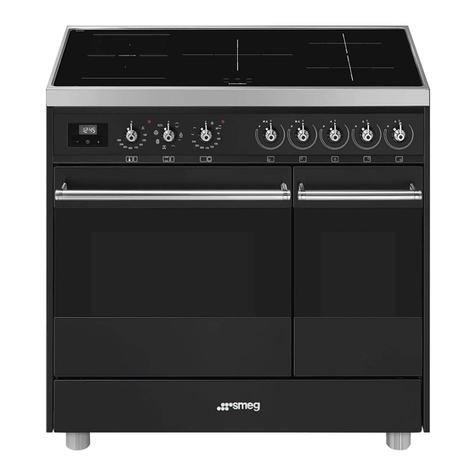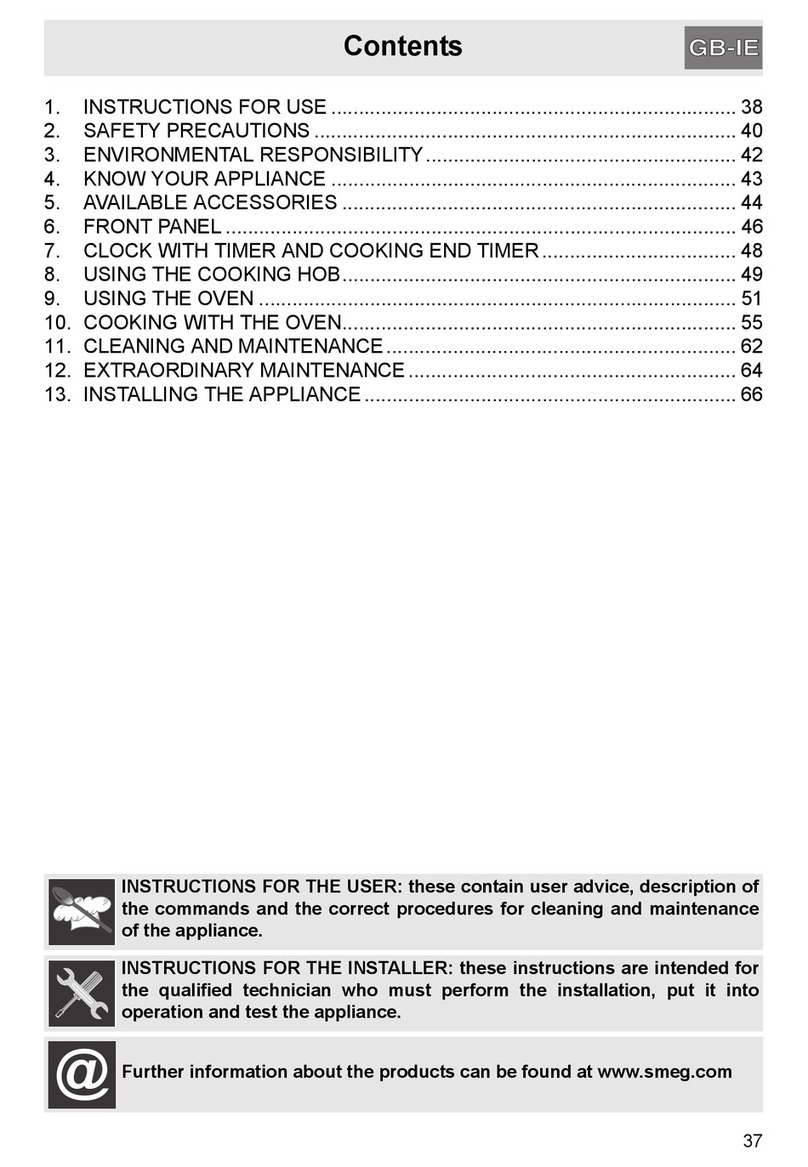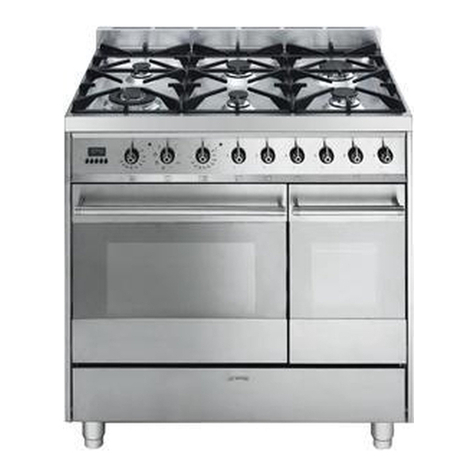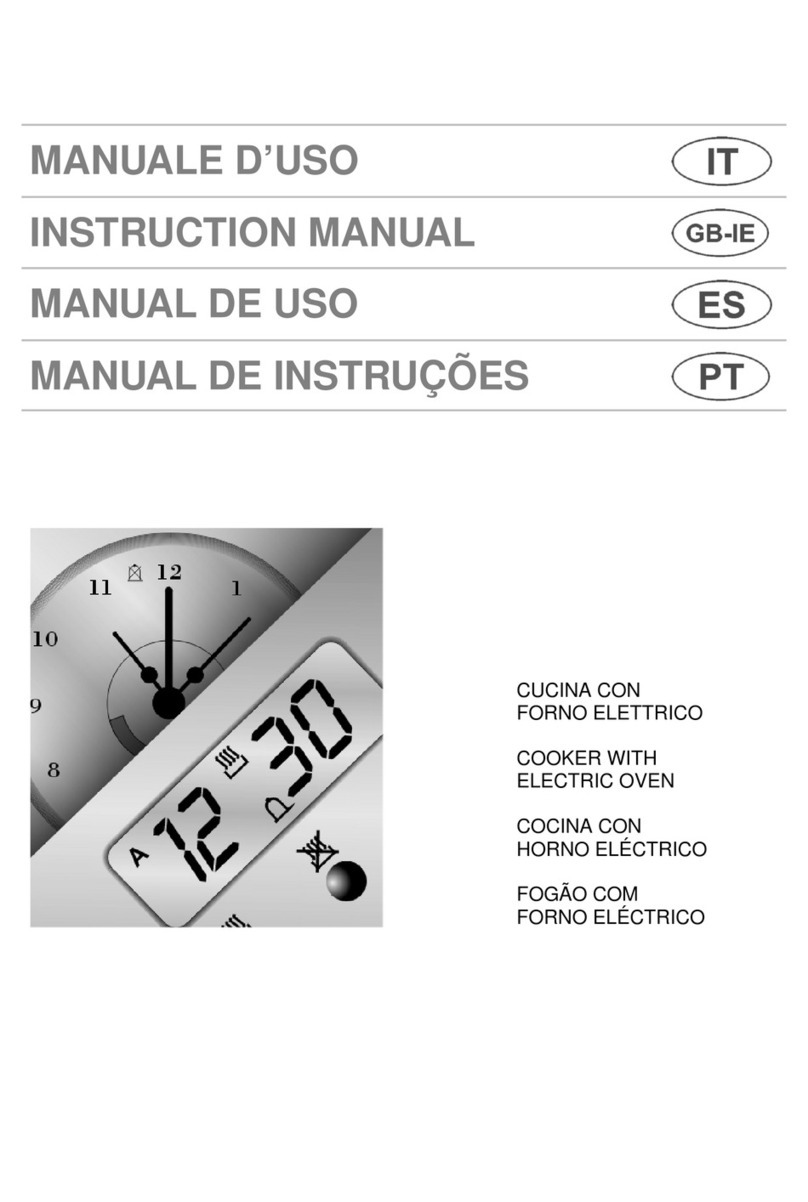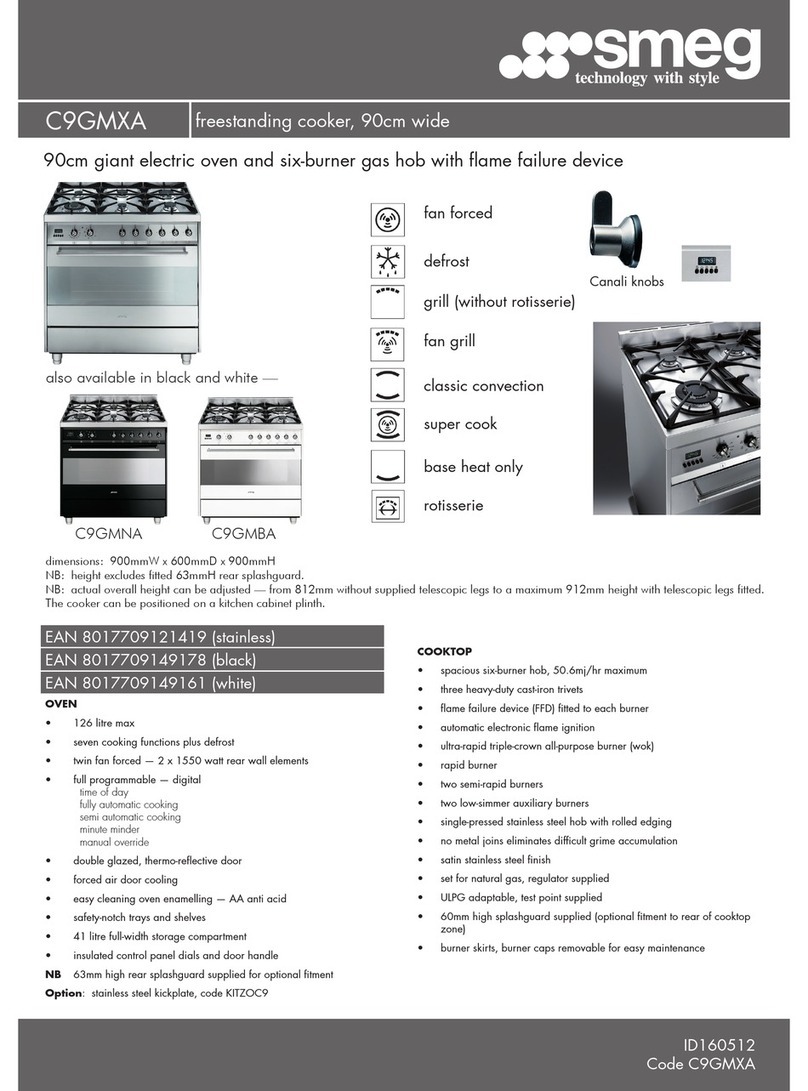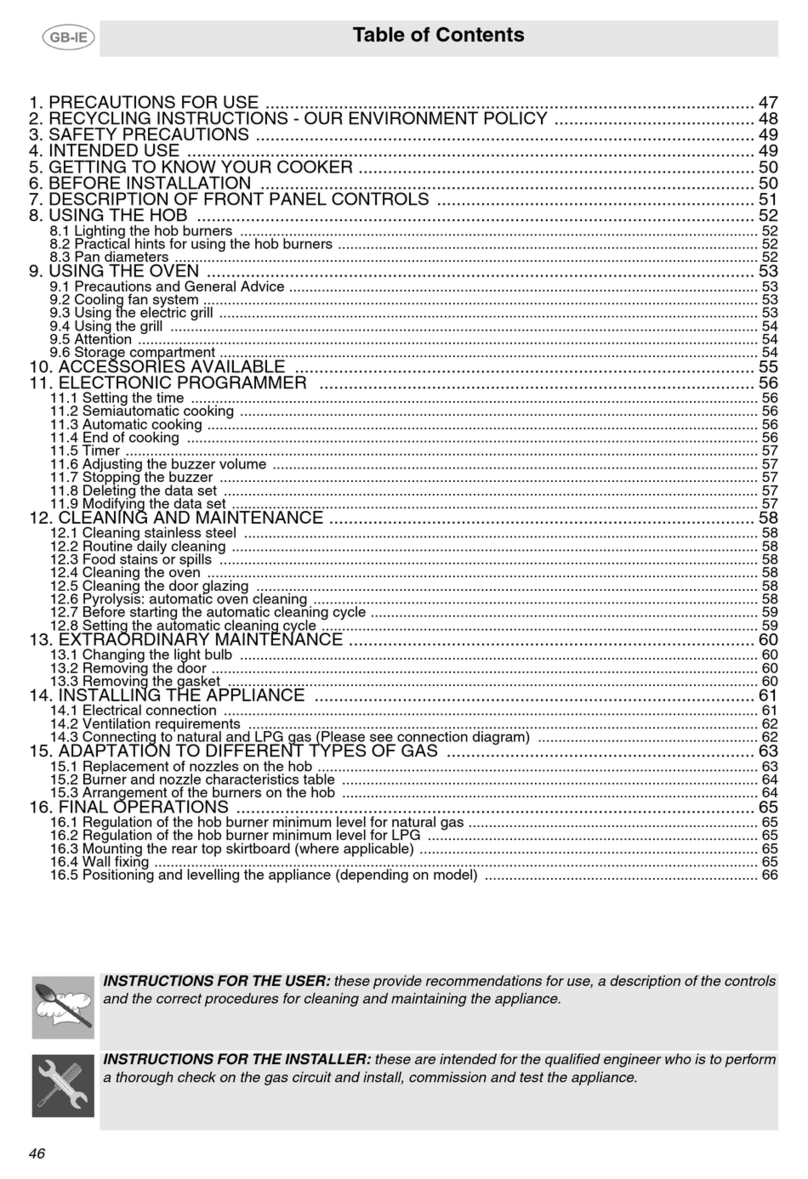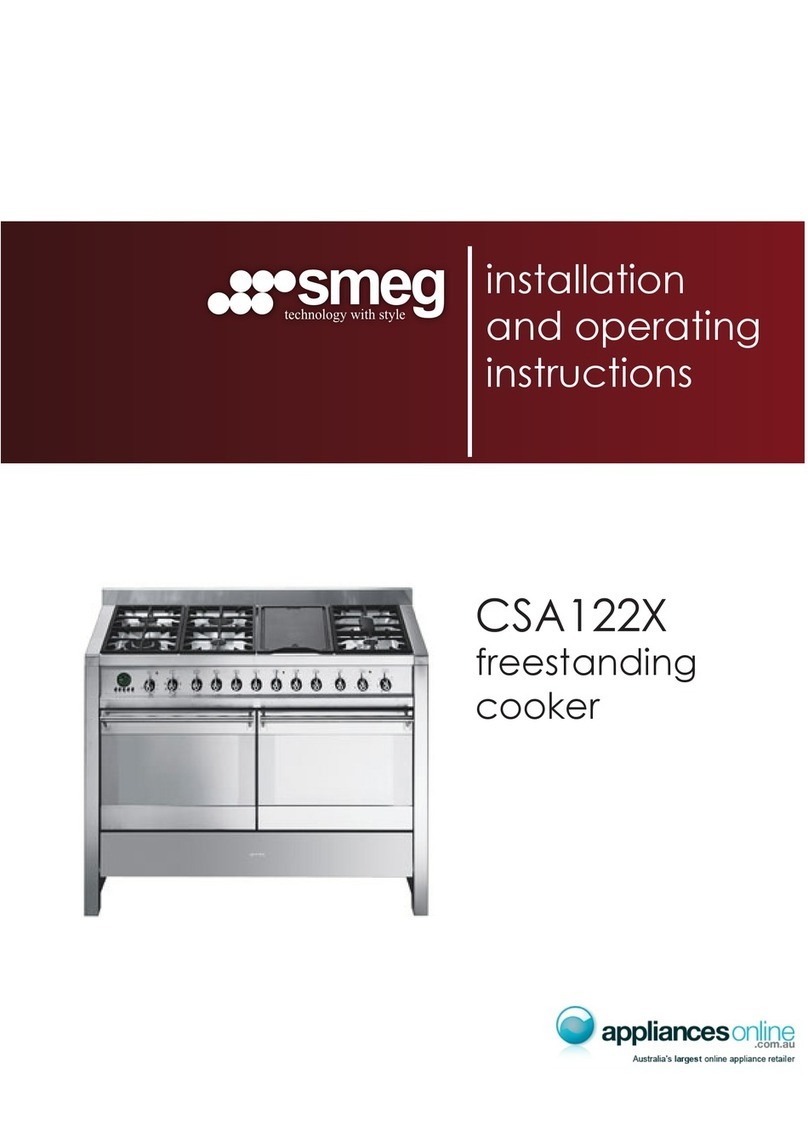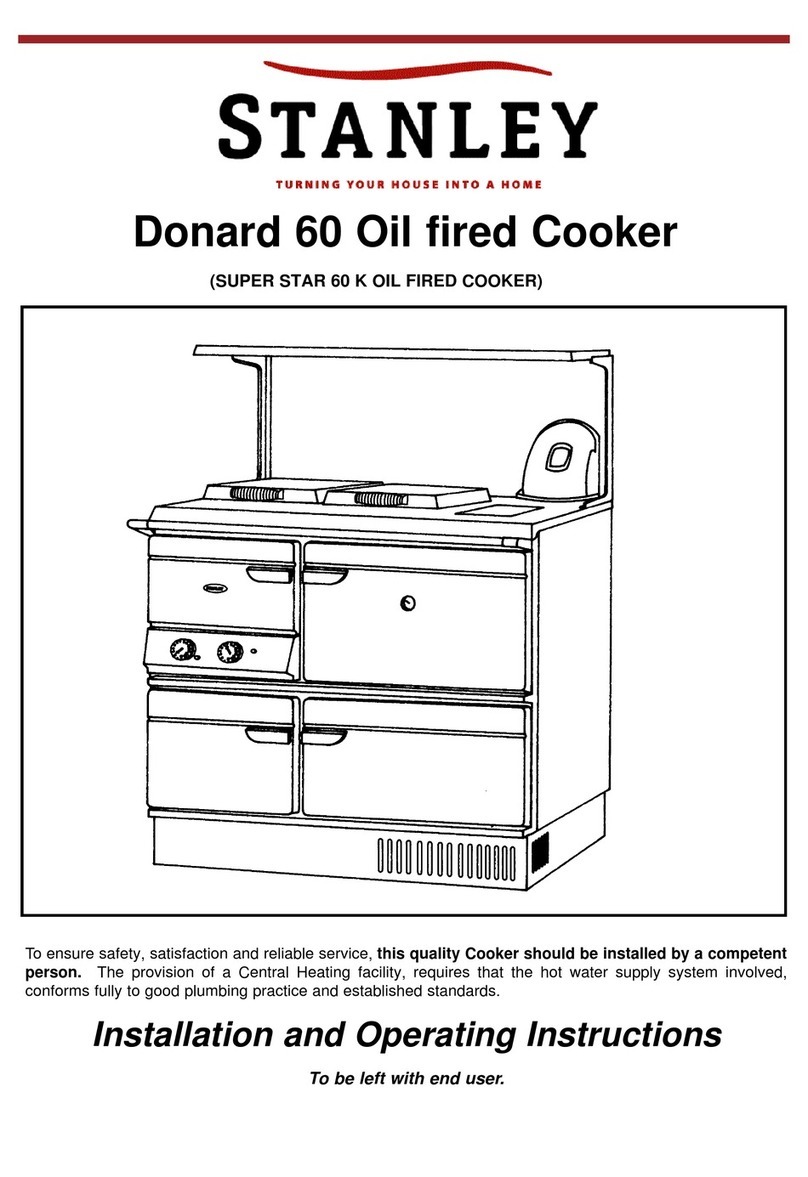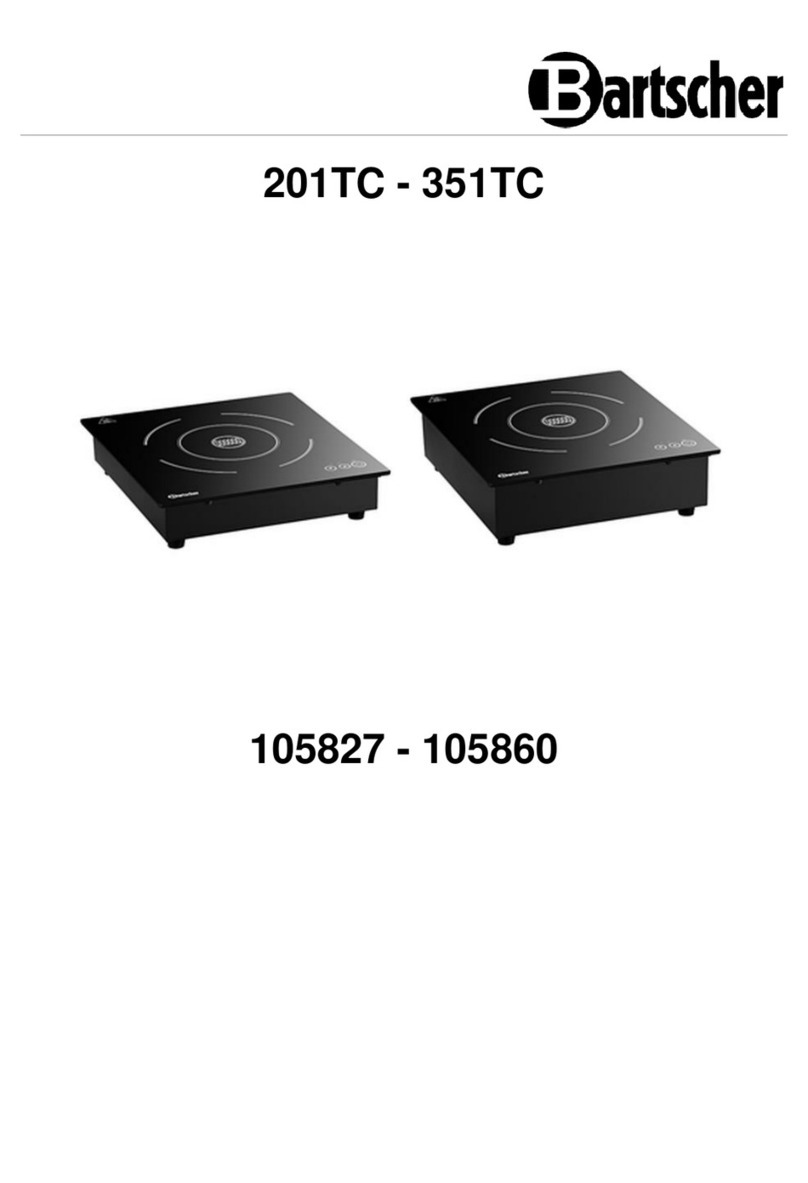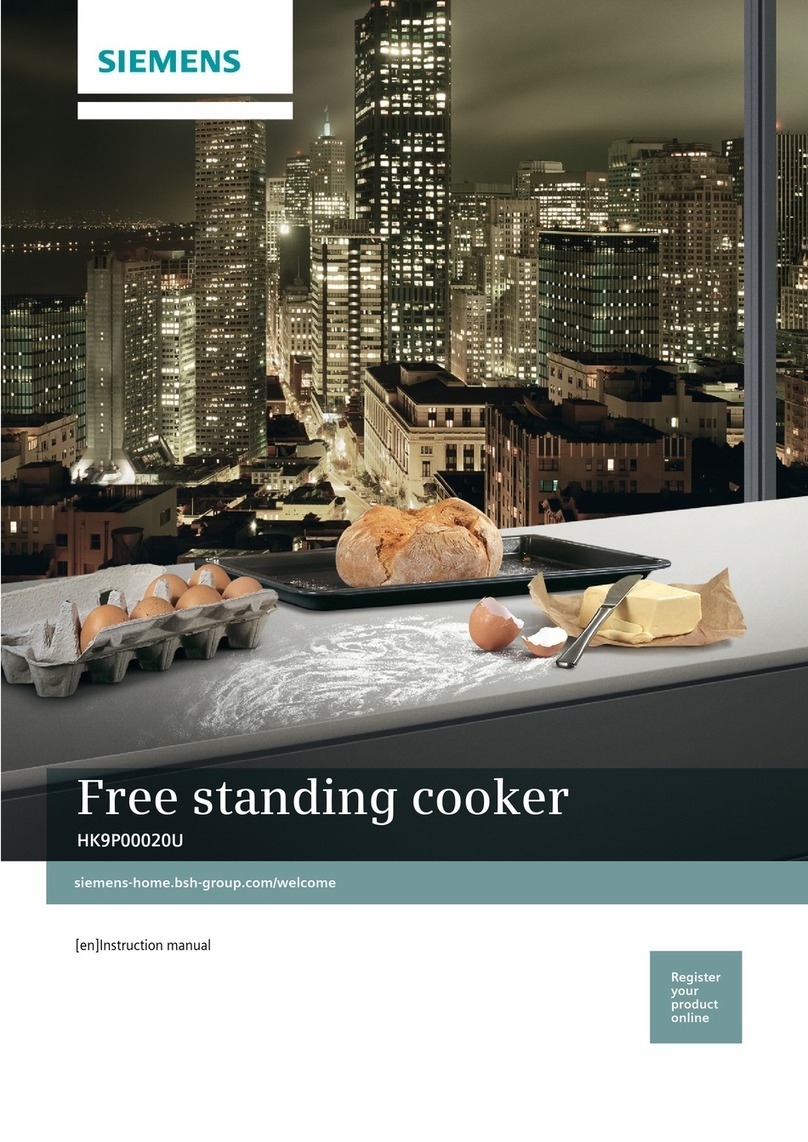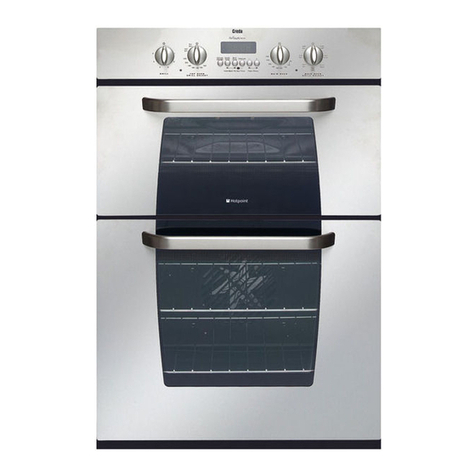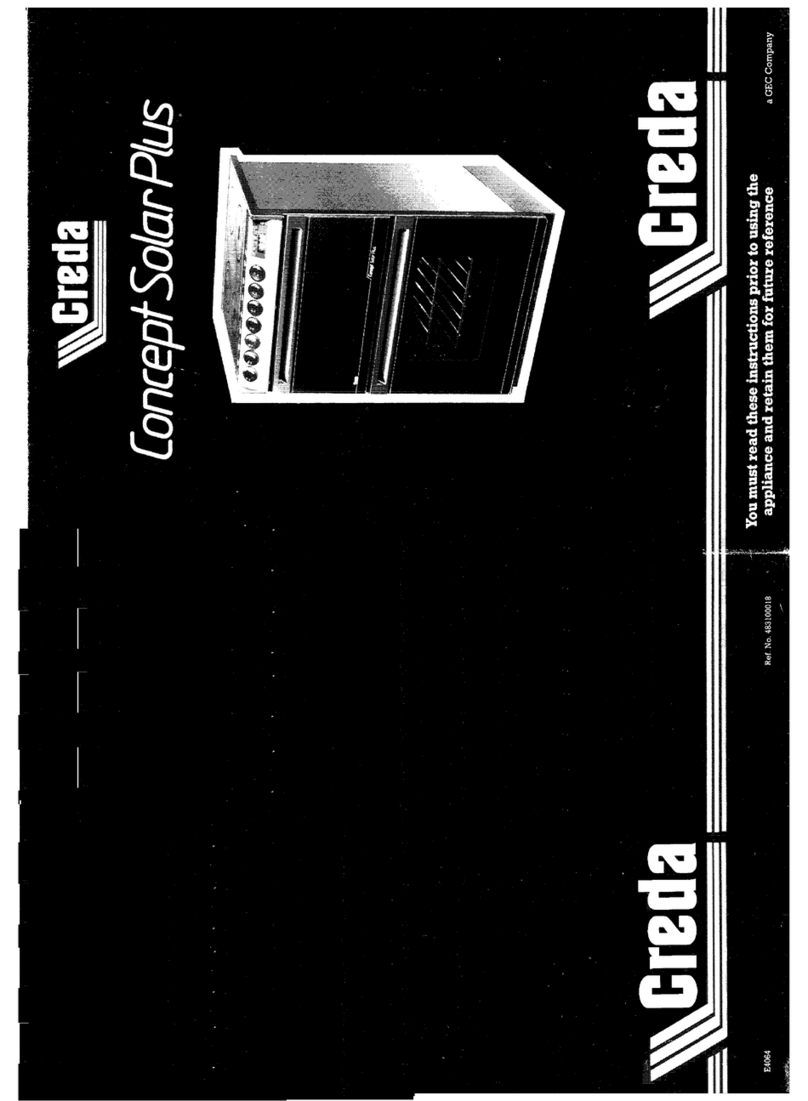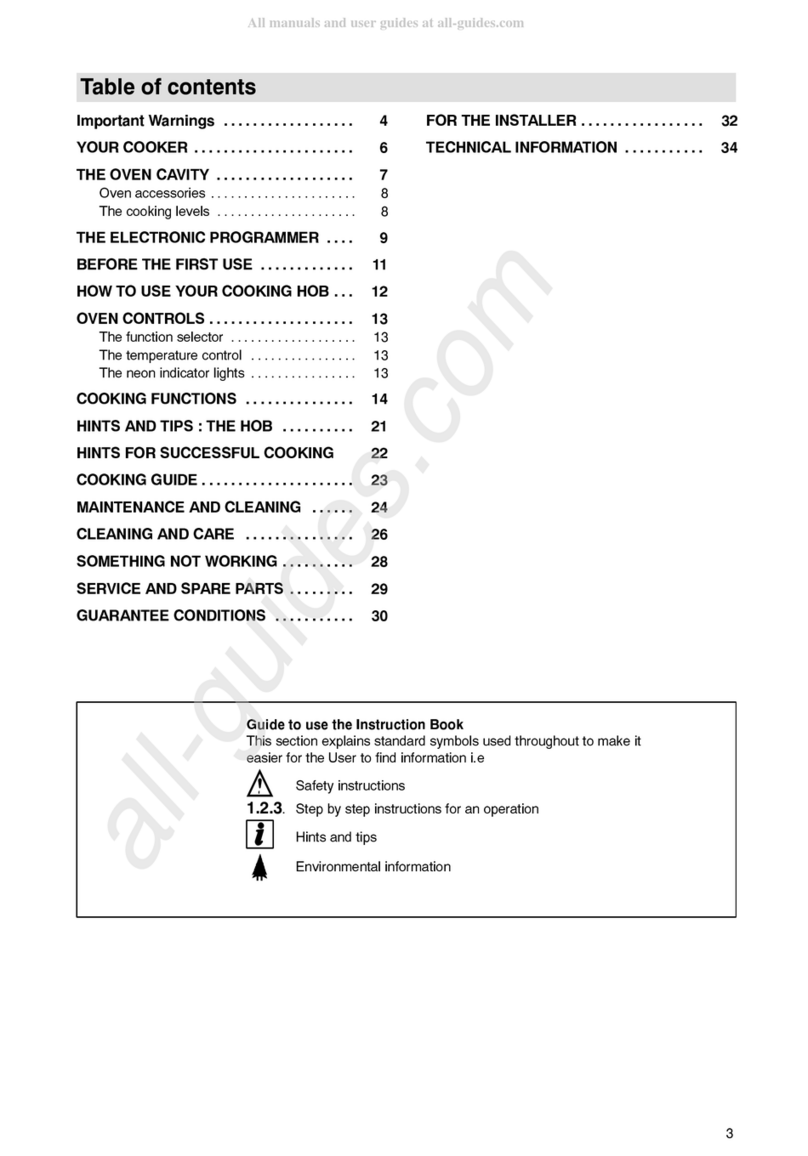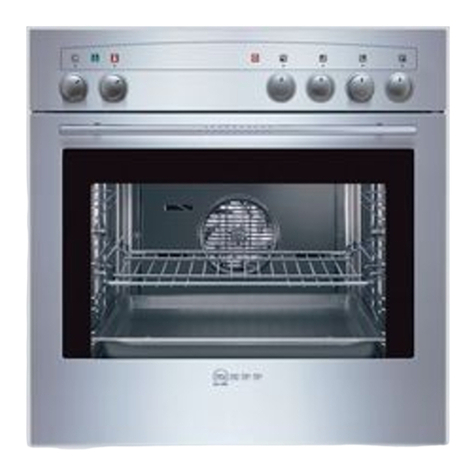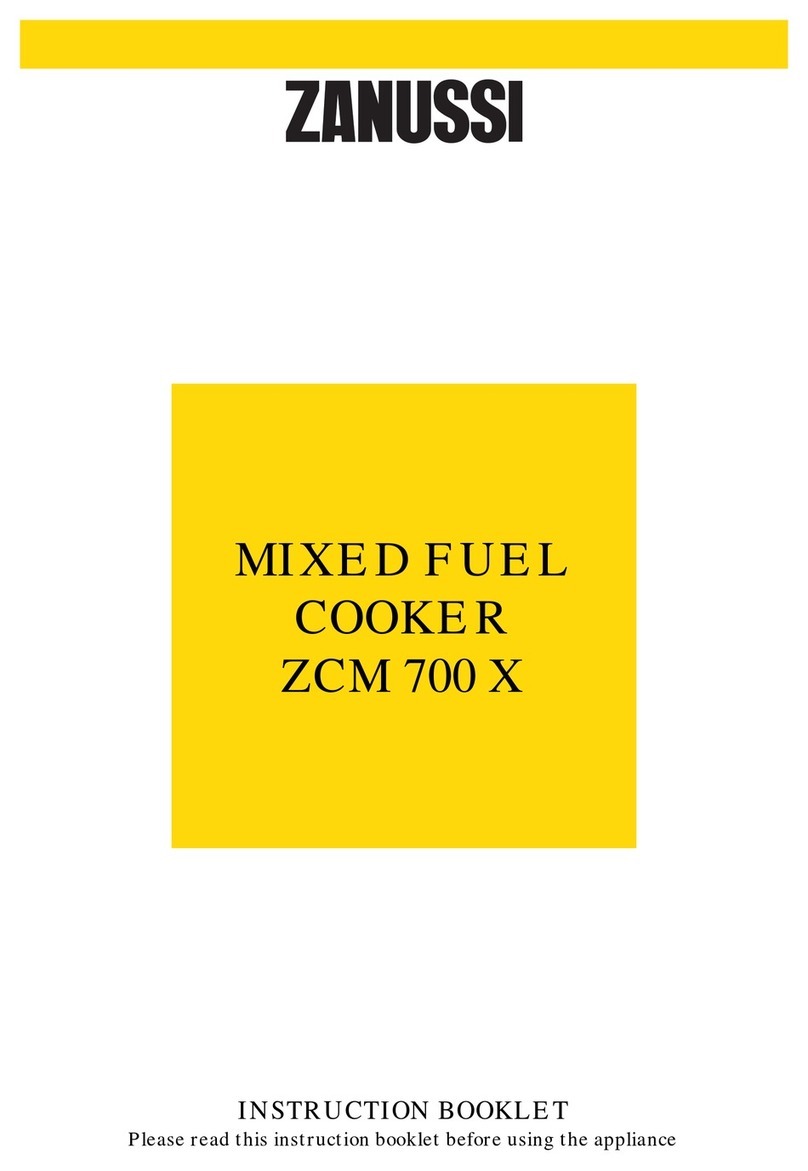
Instructions
59
EN
• If you need to move food or at the
end of cooking, open the door
5 cm for a few seconds, let the
steam come out, then open it fully.
• Do not open the storage
compartment (where present)
when the oven is on and still hot.
• The items inside the storage
compartment could be very hot
after using the oven.
• DO NOT USE OR STORE
FLAMMABLE MATERIALS IN
THE STORAGE
COMPARTMENT (IF AVAILABLE)
OR NEAR THE APPLIANCE.
• DO NOT USE AEROSOLS IN
THE VICINITY OF THIS
APPLIANCE WHILST IT IS IN
USE.
• Switch off the appliance after use.
• DO NOT MODIFY THIS
APPLIANCE.
• Before any operation on the
appliance (installation,
maintenance, positioning or
movement) always wear PPM.
• Before performing any operation
on the appliance, switch off the
power supply.
• Have qualified personnel carry out
installation and assistance
interventions according to the
standards in force.
• Do not try to repair the appliance
yourself or without the intervention
of a qualified technician.
• Do not pull the cable to remove
the plug.
• If the power supply cable is
damaged, contact technical
support immediately and they will
replace it.
Risk of damaging the appliance
• Do not use abrasive or corrosive
detergents (e.g. scouring
powders, stain removers and
metallic sponges) on glass parts.
• Use wooden or plastic utensils.
• Racks and trays should be inserted
as far as they will go into the side
guides. The mechanical safety
locks that prevent them from being
removed must face downwards
and towards the back of the oven.
• Do not sit on the appliance.
• Do not use steam jets to clean the
appliance.
• Do not obstruct ventilation
openings and heat dispersal slots.
• Never leave the appliance
unattended during cooking
operations where fats or oils
could overheat and take fire. Be
very careful.
• Never leave objects on the
cooking surface.


